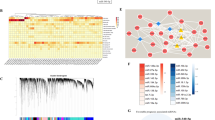Summary
Over-expression of Fas ligand (FasL) on tumor cell surface can induce the apoptosis of specific activated tumor infiltrating lymphocytes (TILs) via the Fas/FasL pathway, leading to the formation of a site of immune privilege surrounding the tumor mass for escaping immune surveillance and promoting tumor proliferation, invasion and metastasis. The blocking effect of miR-21 on FasL-mediated apoptosis in breast cancers was investigated in this study. The expression levels of miR-21 and FasL in human breast carcinoma cell lines were detected by using RT-PCR and Western blotting. FasL as a target gene of miR-21 was identified by Luciferase assay. The apoptosis of Jurkat T lymphocytes induced by MCF-7 cells was determined by flow cytometry. It was found that in four human breast cancer cell lines, FasL expression level in MCF-7 cells was the highest, while miR-21 was down-regulated the most notably. After miR-21 expression in MCF-7 cells was up-regulated, FasL was identified as a target gene of miR-21. When the effector/target (E/T) ratio of MCF-7 cells and Jurkat cells was 10:1, 5:1 and 1:1, the inhibitory rate of apoptosis of Jurkat T lymphocytes induced by MCF-7 cells was 95.81%, 93.16% and 91.94%, respectively. It is suggested that in breast cancers miR-21 expression is negatively associated with FasL expression, and FasL is a target gene of miR-21. miR-21 targeting and regulating FasL-mediated apoptosis will bring us the possibility of a new tumor immunotherapy via breaking tumor immune privilege.
Similar content being viewed by others
References
Strand S, Hofmann WJ, Hug H, et al. Lymphocyte apoptosis induced by CD 95 (APO-1/Fas) ligand-expressing tumor cells—a mechanism of immune evasion? Nat Med, 1996,2(12):1361–1366
Ryan AE, Shanahan F, O’Connell J, et al. Fas ligand promotes tumor immune evasion of colon cancer in vivo. Cell Cycle, 2006,5(3):246–249
Müschen M, Moers C, Warskulat U, et al. CD95 ligand expression as a mechanism of immune escape in breast cancer. Immunology, 2000,99(1):69–77
Reimer T, Herrnring C, Koczan D, et al. FasL:Fas ratio—a prognostic factor in breast carcinomas. Cancer Res, 2000,60(4):822–828
O’Connell J, Bennett MW, O’Sullivan GC, et al. The Fas counterattack: cancer as a site of immune privilege. Immunol Today, 1999,20(1):46–52
Griffith TS, Brunner T, Fletcher SM, et al. Fas ligand-induced apoptosis as a mechanism of immune privilege. Science, 1995,270(5239):1189–1192
Ungefroren H, Voss M, Jansen M, et al. Human pancreatic adenocarcinomas express Fas and Fas ligand yet are resistant to Fas-mediated apoptosis. Cancer Res, 1998,58(8):1741–1749
Zhang W, Ding EX, Wang Q, et al. Fas ligand expression in colon cancer: a possible mechanism of tumor immune privilege. World J Gastroenterol, 2005, 11(23):3632–3635
Sayed D, He M, Hong C, et al. MicroRNA-21 is a downstream effector of AKT that mediates its antiapoptotic effects via suppression of Fas ligand. J Biol Chem, 2011,285(26):20281–20290
Sayed D, Rane S, Lypowy J, et al. MicroRNA-21 targets Sprouty2 and promotes cellular outgrowths. Mol Biol Cell, 2008,19(8):3272–3278
Chao TF, Xiong HH, Liu W, et al. MiR-21 mediates the radiation resistance of glioblastoma cells by regulating PDCD4 and hMSH2. J Huazhong Univ Sci Technol [Med Sci], 2013,33(4):525–552
Wang X, Liu Y, Chen X, et al. Impact of MiR-21 on the expression of FasL in the presence of TGF-β1. Aesthet Surg J, 2013,33(8):1186–1198
Wang N, Zhang CQ, He JH, et al. MiR-21 down-regulation suppresses cell growth, invasion and induces cell apoptosis by targeting FASL, TIMP3, and RECK genes in esophageal carcinoma. Dig Dis Sci, 2013,58(7):1863–1870
Wang P, Zhuang L, Zhang J, et al. The serum miR-21 level serves as a predictor for the chemosensitivity of advanced pancreatic cancer, and miR-21 expression confers chemoresistance by targeting FasL. Mol Oncol, 2013,7(3): 334–345
Zhang L, Dong LY, Li YJ, et al. miR-21 represses FasL in microglia and protects against microglia-mediated neuronal cell death following hypoxia/ischemia. Glia, 2012,60(12):1888–1895
Buscaglia LE, Li Y. Apoptosis and the target genes of microRNA-21. Chin J Cancer, 2011,30(6):371–380
Author information
Authors and Affiliations
Corresponding authors
Additional information
This project was supported by grants from the National Natural Science Foundation of China (No. 81172467) and the Natural Science Foundation of Hubei Province (No. 2012FFB02509).
Rights and permissions
About this article
Cite this article
Wu, Mf., Yang, J., Xiang, T. et al. miR-21 targets Fas ligand-mediated apoptosis in breast cancer cell line MCF-7. J. Huazhong Univ. Sci. Technol. [Med. Sci.] 34, 190–194 (2014). https://doi.org/10.1007/s11596-014-1257-5
Received:
Revised:
Published:
Issue Date:
DOI: https://doi.org/10.1007/s11596-014-1257-5




